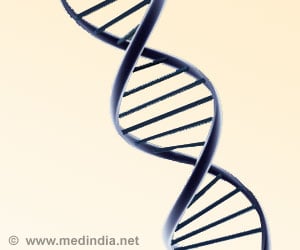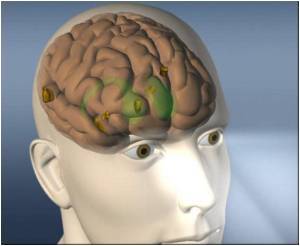A research team from Northwestern University have identified a new mode of timekeeping that involves priming the cell's furnace to properly use stored fuel when we are not eating.

"Circadian clocks are with us on Earth because they have everything to do with energy," said Joe Bass, M.D., who led the research. "If an organism burns its energy efficiently, it has a better chance of survival. Our results tell us how the circadian clock triggers the cell's energy-burning process. Cells are most capable of using fuel when the clock is working properly."
Bass is the Charles F. Kettering Professor and chief of the division of endocrinology, metabolism and molecular medicine at Northwestern University Feinberg School of Medicine and an endocrinologist at Northwestern Memorial Hospital.
Mitochondria regulate the supply of energy to cells when we are at rest, with no glucose available from food. In a study of mice, the researchers found that the circadian clock supplies the match to light the furnace and on the match tip is a critical compound called NAD+. It combines with an enzyme in mitochondria called Sirtuin 3, which acts as the flint, to light the furnace. When the clock in an animal isn't working, the animal can't metabolize stored energy and the process doesn't ignite.
This pathway through which the body clock controls activities within the mitochondria shows how energy generation is tied tightly to the light-dark/activity-rest cycle each day.
The findings, which could be useful in the development of therapies to treat metabolic disorders related to circadian disruption, will be published Sept. 19 by the journal Science.
The clock facilitates oxidative rhythms that anticipate an animal's fasting/feeding cycle that occurs during the transition from light to darkness and wakefulness to sleep each day, and, in so doing, prevents the cell from "starving" during the night.
Bass and his research group worked together with Navdeep S. Chandel, a colleague of Bass' at Feinberg, and John M. Denu, at the University of Wisconsin-Madison. They found the mice lacking clocks had defects in their mitochondria: the mitochondria could not metabolize stored energy and had no reserve to prevent depletion of the main currency, ATP. (Adenosine triphosphate is an energy-bearing molecule found in all living cells.)
Working with Northwestern colleague Milan Mrksich, they went on to show that removal of the clock depletes the necessary ingredient to turn on an enzyme within mitochondria, Sirtuin 3, which activates energy burning during fasting.
The researchers also showed that when the circadian clock was disrupted, resulting in a lack of NAD+, they could provide NAD+ supplements and restore function to the mitochondrion.
The findings expand the understanding of the molecular pathways linking the circadian clock with metabolism and show that the clock provides an essential buffer to stabilize the cell as organisms transition between eating and fasting each day. This knowledge has implications for disease intervention and prevention, including of diabetes, and potentially for states of increased cell demand for metabolism (including inflammation and cancer).
"We have established the chain of events that couples the clock's control switch with the machinery of the mitochondria," said Bass, who also is a member of the department of neurobiology at the Weinberg College of Arts and Sciences. "We now have identified an additional link in the supply chain that provides energy to the cell at different phases of our daily sleep-wake cycle. These findings establish a key role for the NAD+ biosynthetic cycle in this process."
Major senior authors from Northwestern include Chandel, a professor in medicine-pulmonary and cell and molecular biology at Feinberg, and Mrksich, the Henry Wade Rogers Professor of Biomedical Engineering, Chemistry and Cell and Molecular Biology at Feinberg, Weinberg and the McCormick School of Engineering and Applied Science. Chandel and Mrksich are members of the Robert H. Lurie Comprehensive Cancer Center of Northwestern University.
The co-first authors are Clara Bien Peek, a postdoctoral fellow, and Alison H. Affinati, an M.D./Ph.D. candidate, both working in Bass' lab. They have literally worked around the clock on the research, which builds on the earlier work of co-author Kathryn Moynihan Ramsey. In 2009, she and colleagues reported in Science that the compound NAD, together with the enzyme SIRT1, functions as a molecular "switch" to coordinate the internal clock with metabolic systems.
The current research team combined Northwestern expertise in basic circadian clock research, chemistry and physiology with outside collaborators who were able to verify the Northwestern findings.
Co-author Eric Goetzman, from the University of Pittsburgh School of Medicine, an expert in the rare children's disease called metabolic myopathy, was able to confirm that the pattern the researchers observed in mice was the same as that seen in these children. Fasting can be life-threatening for children with this disorder because they can't metabolize stored energy due to defects in their mitochondria.
Analyses by co-author Christopher B. Newgard at Duke University Medical Center identified a signature profile of the metabolic myopathy in mice with altered circadian clock genes.
Source-Eurekalert
 MEDINDIA
MEDINDIA




 Email
Email




